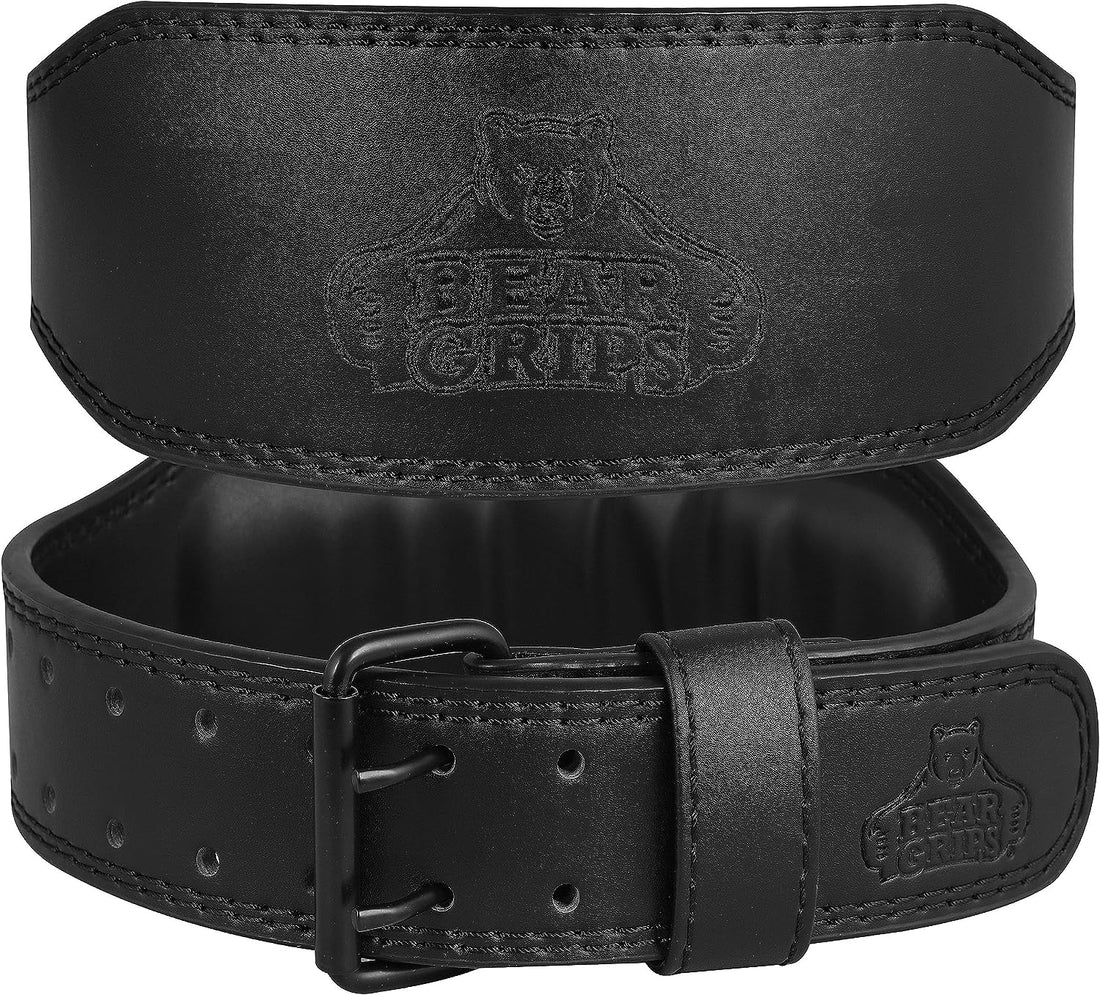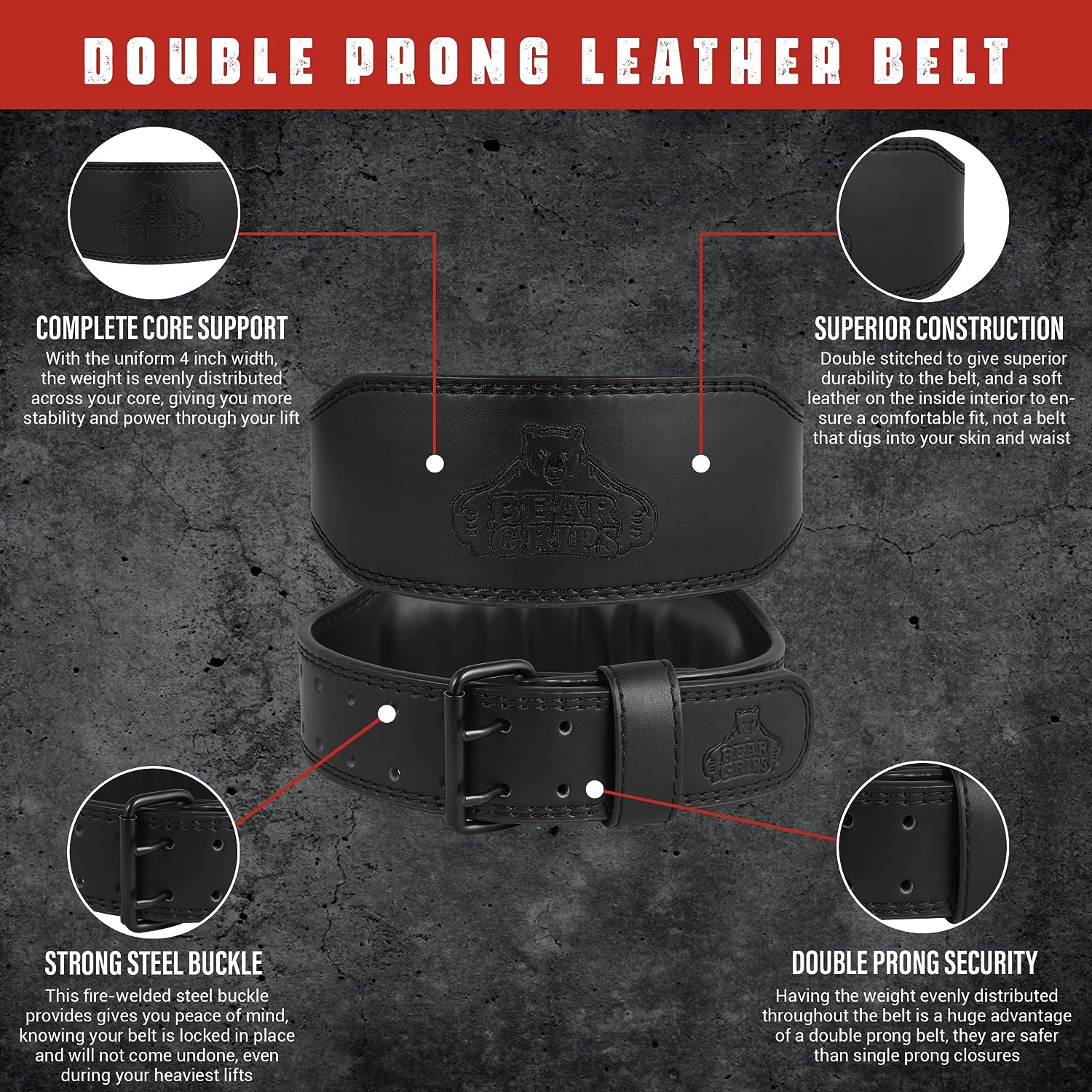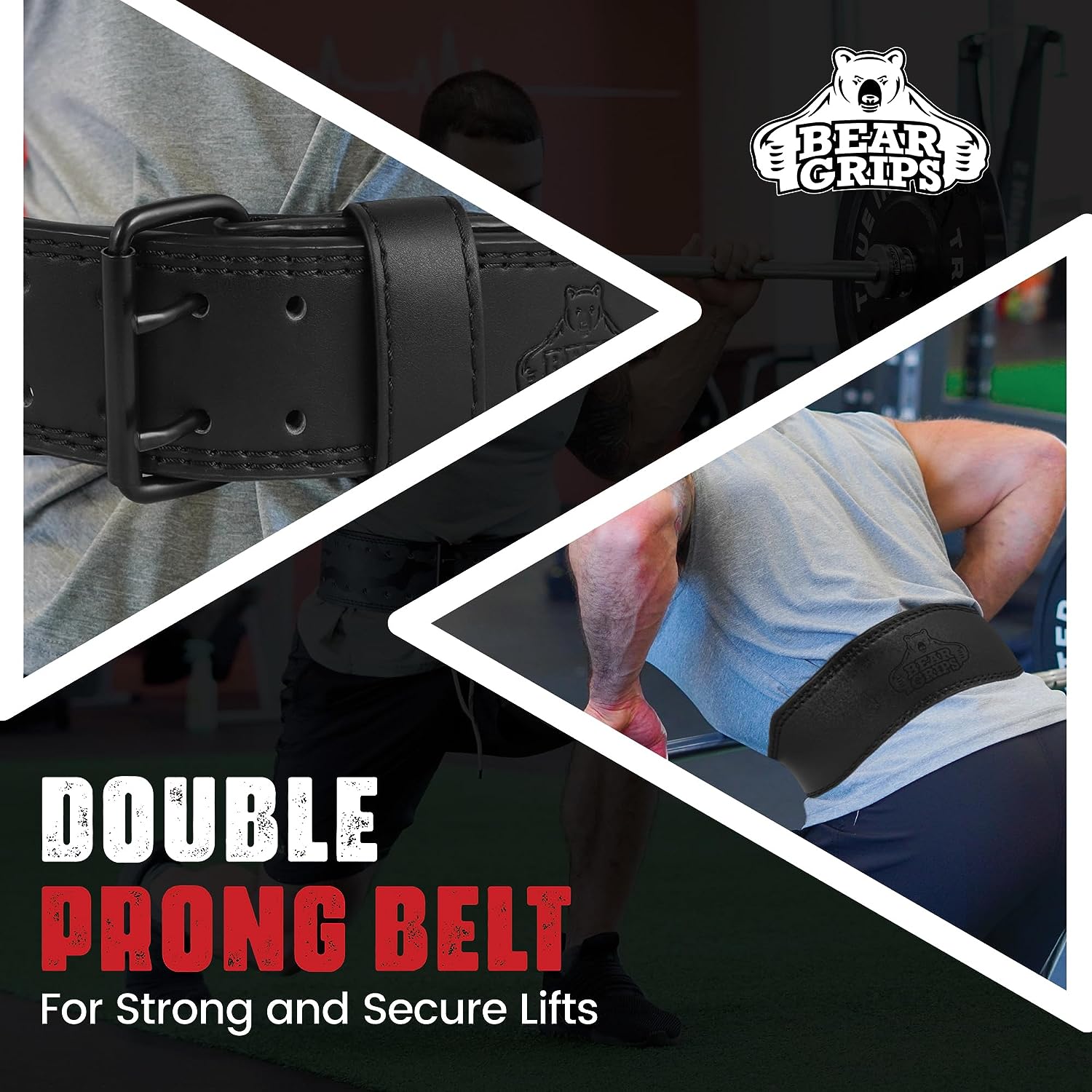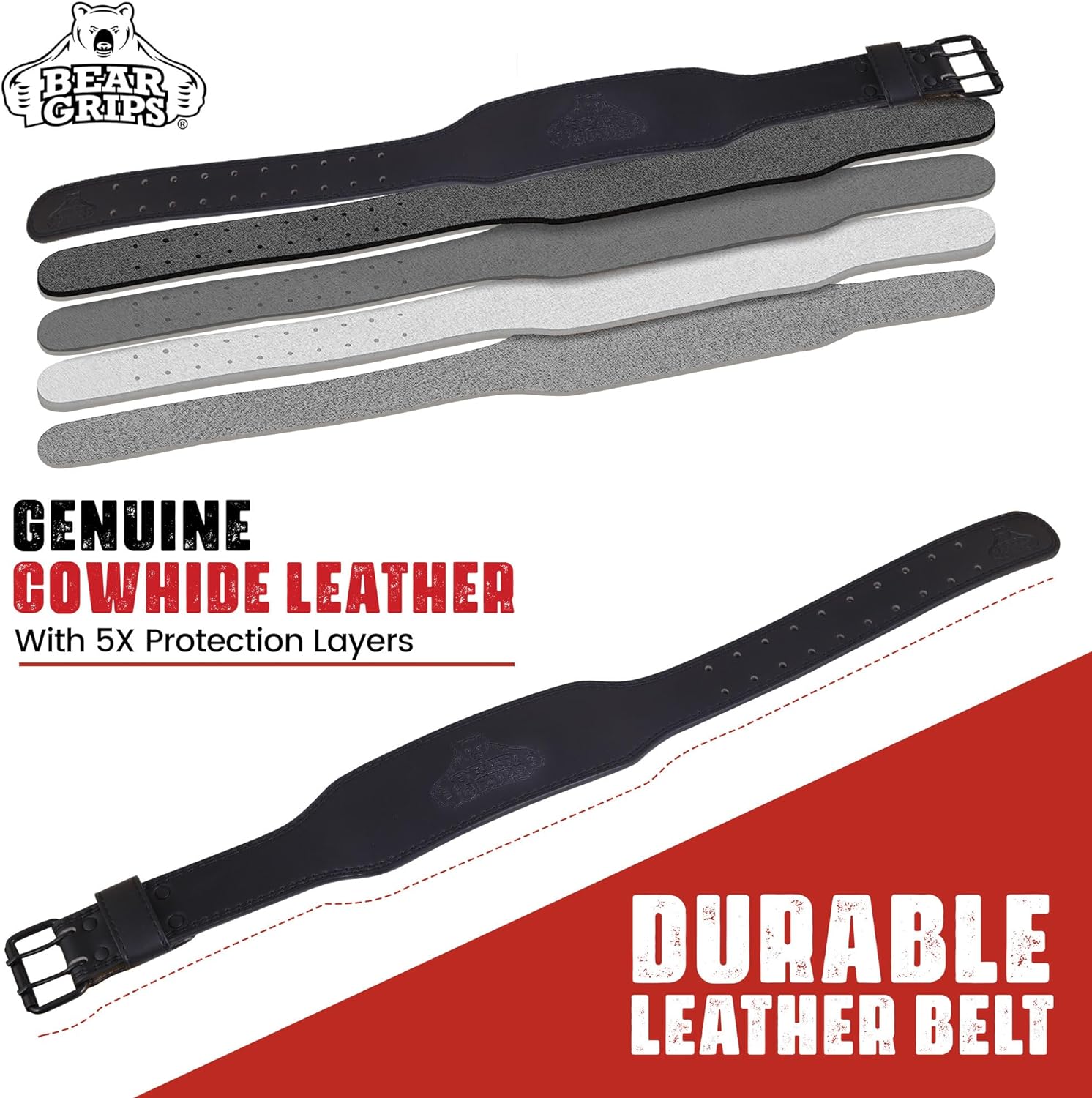
Beginner's Guide to Weight Lifting Belt Use
Share
Weight lifting belts are a popular tool for powerlifters, weightlifters, and gym-goers who lift heavy weights. They can enhance performance and improve safety during strength training exercises. This comprehensive beginner's guide will provide all the information you need to know about weight lifting belt use, including what they do, how to use them properly, the benefits they offer, who should use them, and what to look for when buying one.
Key Takeaways:
- Weight lifting belts are assistive equipment designed to enhance performance during weightlifting.
- Proper use of a weightlifting belt involves wrapping it around the torso, tightening it snugly, and bracing the core.
- Weightlifting belts offer benefits such as increased force production, improved spinal stability, and tactile feedback.
- They are suitable for powerlifters, weightlifters, strength enthusiasts, and strongmen/women.
- Choosing the right belt involves considering factors such as material, width, buckle type, and price range.
What Does a Weightlifting Belt Do?
A weightlifting belt is an essential piece of assistive equipment designed to enhance performance during physical activity, specifically lifting weights. Contrary to popular belief, weightlifting belts are not primarily used for injury prevention. Instead, they are instrumental in improving stability, technique, and overall lifting performance.

When worn correctly, a weightlifting belt provides crucial support to the core muscles. It helps increase stability and reduce unnecessary movement during heavy lifts, allowing for better force production and improved technique. By providing external support to the abdominal and lower back muscles, weightlifting belts help athletes and lifters generate more power and maintain optimal body positioning throughout their lifts.
Weightlifting belts serve as a valuable tool to assist lifters in pushing their limits, challenging their bodies, and reaching new levels of strength and performance.
It's important to note that weightlifting belts are not intended to replace the engagement of core muscles. Instead, they work in conjunction with proper bracing techniques to enhance the lifter's performance. Weightlifting belts offer a tactile cue, reminding lifters to engage their core muscles, brace properly, and maintain alignment during lifts.
For those wondering if weightlifting belts are necessary, the answer depends on individual preferences and training goals. While some lifters opt to use belts only for lifting heavy weights, others find benefit in wearing them during various lifts and exercises to enhance overall stability and technique.
Benefits of Weightlifting Belts:
- Enhanced performance: Weightlifting belts provide support and stability, facilitating greater force production and overall performance improvement.
- Increased stability: By supporting the core muscles, weightlifting belts enhance stability and reduce excessive movement during lifts, minimizing the risk of injury.
- Improved technique: Weightlifting belts help maintain proper body alignment and form, which is crucial for executing lifts with optimal technique.
Now that we understand how weightlifting belts work and their potential benefits, it's essential to explore the proper usage and techniques to maximize their effectiveness.
How To Use a Weightlifting Belt
Using a weightlifting belt correctly is essential for maximizing its benefits. The proper weightlifting belt use involves several key steps.
Wrapping the Belt
Start by wrapping the weightlifting belt around your torso, positioning it just above the hip bone. Ensure that the belt is positioned evenly all the way around.
Tightening the Belt
Once the belt is wrapped around your torso, it's time to tighten it. The belt should be tightened to a comfortable but snug level. It should provide enough support without restricting your movements. Leave enough room for your stomach to expand during bracing.
Bracing the Core
Properly bracing your core is crucial when using a weightlifting belt. Before lifting, take a deep breath into your belly, filling it with air. As you exhale, flex your abdominal muscles and lower back, creating tension in your core muscles. This bracing position should be maintained throughout the lift.
By following these steps, you can ensure proper weightlifting belt use and maximize the benefits of using a weightlifting belt.
| Benefits of Proper Weightlifting Belt Use |
|---|
| Enhanced stability and support |
| Improved force production |
| Reduced risk of injury |
| Enhanced bracing mechanics |
Benefits of Weightlifting Belts
Weightlifting belts offer several benefits to lifters. By providing external support and improving force transfer from the limbs, these belts can enhance force production during lifts. This increased force production enables lifters to handle heavier weights and achieve greater muscle activation.
Additionally, weightlifting belts improve spinal stability, minimizing the risk of injury during heavy lifting exercises. The belt's tight and firm fit around the waist helps create intra-abdominal pressure, supporting the spine and reducing excessive stress on the lower back.
One of the key advantages of weightlifting belts is their ability to minimize spinal extension, particularly in the lumbar region. By limiting the range of motion in the lower back, belts help lifters maintain a more neutral spine position, reducing the risk of disc injuries and other related issues.

Weightlifting belts also provide tactile feedback to lifters. The pressure and sensation the belt creates against the torso act as a reminder to engage and stabilize the core muscles throughout each lift. This tactile feedback allows lifters to maintain proper form and technique, enhancing their overall performance and reducing the likelihood of injury.
Overall, weightlifting belts are a valuable tool to maximize performance, increase stability, and improve safety during strength training exercises. Their ability to enhance force production, improve spinal stability, minimize spinal extension, and provide tactile feedback makes them a beneficial accessory for lifters of all levels.
Who Should Use a Weightlifting Belt
Weightlifting belts are not limited to a specific group of individuals; they are suitable for a wide range of strength enthusiasts. Whether you are a powerlifter, weightlifter, strongman, strongwoman, or simply someone who wants to lift heavier weights, a weightlifting belt can be a valuable tool in your training arsenal.
Powerlifters and weightlifters commonly use weightlifting belts to enhance their performance during heavy lifts. The added stability and core support provided by the belt can help these athletes generate more force and maintain proper form throughout their lifts.
Strength enthusiasts who are focused on increasing their lifting capacity can also benefit from using weightlifting belts. By providing additional support to the core muscles, these belts allow lifters to exert maximum strength and lift heavier loads with greater confidence.
For strongmen and strongwomen, weightlifting belts can be particularly advantageous during events that require maximal strength and stability. The belt aids in maintaining proper form and reduces the risk of injury when performing challenging feats of strength.
Ultimately, whether you are an experienced lifter or just starting out, the decision to use a weightlifting belt depends on your training goals and personal comfort. Keep in mind that proper form and technique should always be prioritized, with the belt serving as a supplemental tool rather than a crutch.
What To Look For When Buying a Weightlifting Belt
When purchasing a weightlifting belt, there are several factors to consider to ensure you choose the right one for your needs. Here are the key aspects to keep in mind:
- Material and Thickness: The material and thickness of the belt play a crucial role in its durability and performance. Leather belts are known for their longevity and solid support, while velcro belts offer adjustability and ease of use.
- Belt Width: The width of the belt should be selected based on personal preference and the type of lifts you perform. Generally, a width of 4 inches is standard and suitable for most exercises, providing sufficient support to the lower back and core.
- Buckle Type: There are different buckle types available, each offering its own advantages and adjustability levels. Single-prong buckles are popular for their simplicity and reliability, while lever buckles allow for quick and easy adjustments.
- Price Range: Quality weightlifting belts typically fall within the price range of $60 to $150. Investing in a durable and well-designed belt is crucial for long-term use and optimal performance.
By considering these factors, you can confidently choose a weightlifting belt that suits your preferences, training goals, and budget.
When Should You Buy a Weightlifting Belt?
There is no specific dividing line for when to purchase a weightlifting belt. Whether you are just starting out or have been lifting for years, a weightlifting belt can be a valuable tool for strength development and performance enhancement. While it's important to learn and practice proper bracing techniques without relying on a belt, incorporating a weightlifting belt into your training can aid in learning to brace effectively.
Weightlifting belts are not only for advanced lifters or professional athletes; they can benefit individuals at any stage of their lifting career. If you are considering purchasing a weightlifting belt, it's a good indicator that you are ready to take your training to the next level and prioritize safety while maximizing your lifting potential.

Through the use of a weightlifting belt, you can develop a stronger core, improve stability, and gain confidence in your lifts. It serves as a tool for strength development and allows you to focus on performing the movements correctly with proper form. Learning to brace the core properly is an essential skill in strength training, and a weightlifting belt can assist in teaching this technique by providing valuable feedback and support.
"Incorporating a weightlifting belt can be particularly beneficial for individuals who are learning to brace, as it provides a physical cue and supports the core muscles during heavy lifts." - Dr. Jessica Wilson, Strength and Conditioning Specialist
If you are unsure about whether it's the right time to buy a weightlifting belt, consider factors such as your lifting goals, the type of exercises you perform, and your overall strength development. If you are committed to improving your strength and technique, investing in a weightlifting belt can be a wise decision.
Remember, a weightlifting belt should never be seen as a substitute for proper technique and training. It's important to continue focusing on building a strong foundation and mastering the fundamental movements before relying solely on a belt.
So, if you are ready to enhance your strength development, improve stability, and learn proper bracing techniques, it may be the right time for you to buy a weightlifting belt.
Which Kind of Weightlifting Belt Should You Get?
When it comes to choosing the right weightlifting belt, there are a few options to consider. The type of belt you choose will depend on your individual needs, preferences, and lifting goals.
Velcro Belts: Velcro belts are a popular choice for many lifters due to their adjustability and ease of use. They typically have a hook-and-loop closure system that allows for quick and easy adjustments. Velcro belts are great for beginners and those who prefer a more customizable fit.
Leather Belts with a Single-Prong Buckle: Leather belts are a classic choice that offers durability and excellent support. These belts typically have a single-prong buckle, which provides a secure and snug fit. Leather belts are ideal for lifters who prioritize stability and reliability.
Lever Belts: Lever belts are known for their convenience and fastening mechanism. They feature a lever closure system that allows for easy on and off. Lever belts are often preferred by powerlifters and those who require quick adjustments between sets.
When choosing the right weightlifting belt, it's essential to consider factors such as your lifting style, comfort, and personal preference. Each type of belt offers its own advantages and considerations.
You can compare the different types of weightlifting belts in the following table:
| Weightlifting Belt | Advantages | Considerations |
|---|---|---|
| Velcro Belt | Adjustable and easy to use | May not provide as much support as other types |
| Leather Belt with Single-Prong Buckle | Durable and offers excellent support | May require more time to put on and take off |
| Lever Belt | Convenient and provides quick adjustments | Potentially heavier and more expensive than other options |
Take into account your specific needs and preferences when selecting a weightlifting belt. Ultimately, the right choice will depend on what works best for you and your lifting goals.
How to Buy the Right Size Weightlifting Belt
Purchasing the right size weightlifting belt is crucial for proper fit and function. To determine your belt size, start by measuring your waist using a measuring tape. Make sure to measure at the point where you plan to wear the belt, typically around the belly button.
Once you have your waist measurement, refer to the sizing chart provided by the belt company. Different manufacturers may have slightly different sizing guidelines, so it's important to follow their recommendations for a proper fit.
The width of a weightlifting belt is typically 4 inches, which is considered standard for most lifts. This width provides adequate support to the lower back without interfering with your range of motion.
When it comes to belt thickness, you'll usually have the option of choosing between a 10mm and a 13mm thickness. The 10mm belt is the most common and recommended for most lifters. It offers a balance between support and flexibility. On the other hand, the 13mm belt is thicker and stiffer, providing maximum support but may be uncomfortable for some individuals.
Remember, choosing the right size weightlifting belt is essential to ensure proper form, stability, and injury prevention during your training sessions. Take accurate measurements and consider the width and thickness options to find a belt that suits your needs.
Key Takeaways
- Measure your waist accurately to determine your belt size.
- Refer to the sizing chart provided by the belt company for the most accurate fit.
- A standard weightlifting belt is typically 4 inches wide.
- Choose between a 10mm and 13mm thickness, with the 10mm being the most common and recommended.
Which Kind of Weightlifting Belts to Avoid
While there are many options available, it's important to be aware of certain types of weightlifting belts that may not be ideal for your needs. Here are some belts to avoid:
- Double Prong Belts: Double prong belts can be cumbersome to fasten and adjust. They require more effort to secure compared to single prong belts. However, they are not necessarily more secure or offer any additional benefits in terms of stability or support.
- Cheap Belts: Very cheap belts may not last as long or perform as well as higher quality options. It's important to invest in a belt made from durable materials that can withstand the rigors of heavy lifting. Cheap belts may not provide the necessary support and stability you need for safe and effective weightlifting.
- Tapered Belts: Tapered belts with a wide back and narrow front are less common now and are often aimed at fashion rather than function. These belts may not provide optimal support and stability during heavy lifts. It's best to choose a belt with a consistent width all around to ensure proper alignment and support for your core muscles.
When selecting a weightlifting belt, it's important to prioritize quality, comfort, and functionality. Avoid belts that may compromise your lifting performance and safety.
Weight Lifting Belt Tips & Tricks
To make the most of your weightlifting belt, here are some useful tips and tricks:
- Breathing Techniques: Proper breathing is key to maximizing the effectiveness of your weightlifting belt. Before each lift, take a deep breath, imagine getting punched in the gut, and exhale slowly as you lift the weight. This technique helps to create intra-abdominal pressure and stabilize your core.
- Bracing Mechanics: When using a weightlifting belt, it's essential to engage your core muscles properly. As you wrap the belt around your torso, tighten it to a snug fit. Focus on flexing your oblique muscles and maintaining tension throughout the lift. This bracing technique provides additional support to your core.
- Proper Positioning: Positioning the weightlifting belt correctly is crucial for optimal performance. Ensure that the belt sits just above your hip bones, providing support to your lower back and abdominal muscles. Take the time to adjust the belt to the right position before each lift.
By incorporating these tips and tricks into your weightlifting routine, you can enhance the effectiveness of your weightlifting belt and improve your overall performance and safety.
Conclusion
Weightlifting belts are an essential part of strength training, offering numerous benefits to individuals looking to enhance their performance, training, and safety. By following a weightlifting belt guide and using the belt correctly, lifters can optimize their workouts and maximize their results.
One of the key advantages of using a weightlifting belt is the increased force production it provides. The belt offers external support, allowing lifters to generate more power and lift heavier weights with greater ease. Additionally, weightlifting belts improve spinal stability by providing a solid base for the core muscles, reducing the risk of injury and ensuring proper alignment during lifts.
Another benefit of weightlifting belts is the tactile feedback they offer. The belt provides a sensation against the lower back, acting as a reminder for lifters to maintain proper form and technique. This feedback helps prevent excessive arching of the lower back, which can lead to strain and injury.
Regardless of their lifting experience, anyone can benefit from using a weightlifting belt. Whether you're a seasoned powerlifter or a beginner in the gym, incorporating a weightlifting belt into your training routine can enhance your overall performance and improve safety. Just remember to choose the right belt for your needs, follow proper usage techniques, and enjoy the advantages that weightlifting belts bring to your workouts.
Get your hands on beginner-friendly weight lifting belts available at Bear Grips!
Shop at Amazon.com Now!
FAQ
What does a weightlifting belt do?
A weightlifting belt is an assistive equipment designed to enhance performance during physical activity, specifically lifting weights. It works by providing support and stability to the core muscles, allowing for better force production and improved technique.
How do I use a weightlifting belt properly?
To use a weightlifting belt properly, you should wrap it around your torso just above the hip bone, tighten it to a comfortable but snug level, and maintain proper bracing by taking a deep breath into the belly and flexing the abs and lower back throughout the lift.
What are the benefits of weightlifting belts?
Weightlifting belts can increase force production, improve spinal stability, minimize excessive arching of the lower back, and provide tactile feedback, helping lifters maintain proper form and technique.
Who should use a weightlifting belt?
Weightlifting belts are suitable for powerlifters, weightlifters, strength enthusiasts, strongmen, and strongwomen who engage in strength training and want to lift heavier weights or enhance their performance.
What should I look for when buying a weightlifting belt?
When buying a weightlifting belt, consider factors such as the material and thickness, belt width, buckle type, and price range. Different belts offer different levels of durability, support, adjustability, and convenience.
When should I buy a weightlifting belt?
There is no specific dividing line for when to purchase a weightlifting belt. It can be beneficial for individuals at any stage of their lifting career, but it's important to learn how to properly brace the core before relying on a belt.
Which kind of weightlifting belt should I get?
There are different types of weightlifting belts available, including velcro belts, leather belts with a single-prong buckle, and lever belts. Each type has its own advantages and considerations in terms of adjustability, durability, and ease of use.
How do I buy the right size weightlifting belt?
To buy the right size weightlifting belt, determine your waist measurement and refer to the sizing chart provided by the belt company. The belt width is typically 4 inches, and the recommended thickness is 10mm for most lifters.
Which kind of weightlifting belts should I avoid?
It is generally recommended to avoid double prong belts, very cheap belts, and tapered belts with a wide back and narrow front, as they may be less secure, low in quality, or prioritize fashion over function.
Are there any tips for using a weightlifting belt effectively?
Yes, you can optimize the use of a weightlifting belt by practicing proper breathing techniques, bracing mechanics, and maintaining proper positioning. Techniques such as pretending to get punched in the gut and flexing the oblique muscles can enhance the effectiveness of a weightlifting belt.


